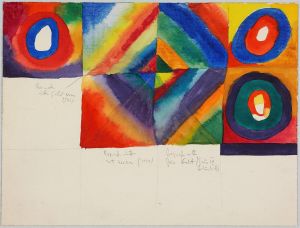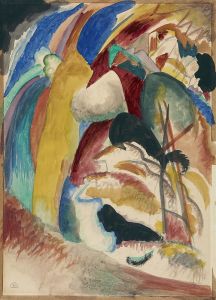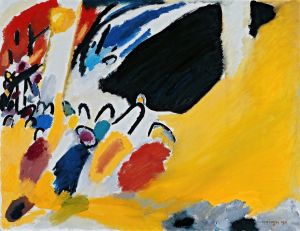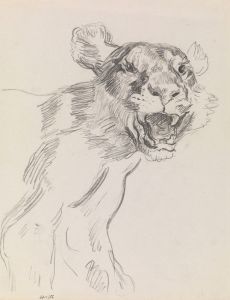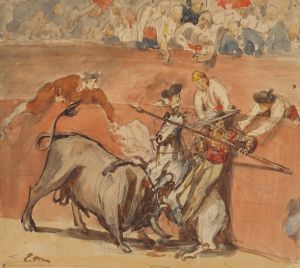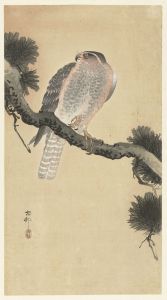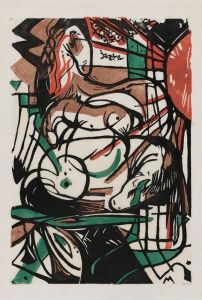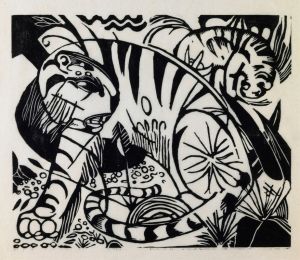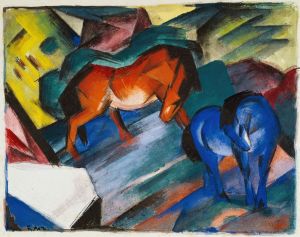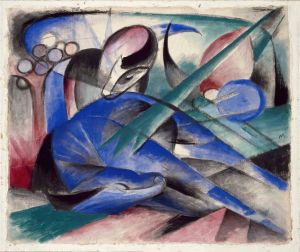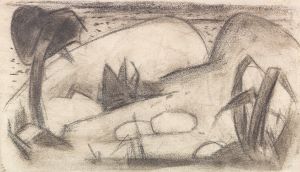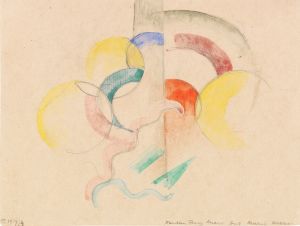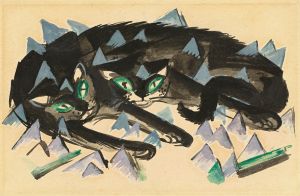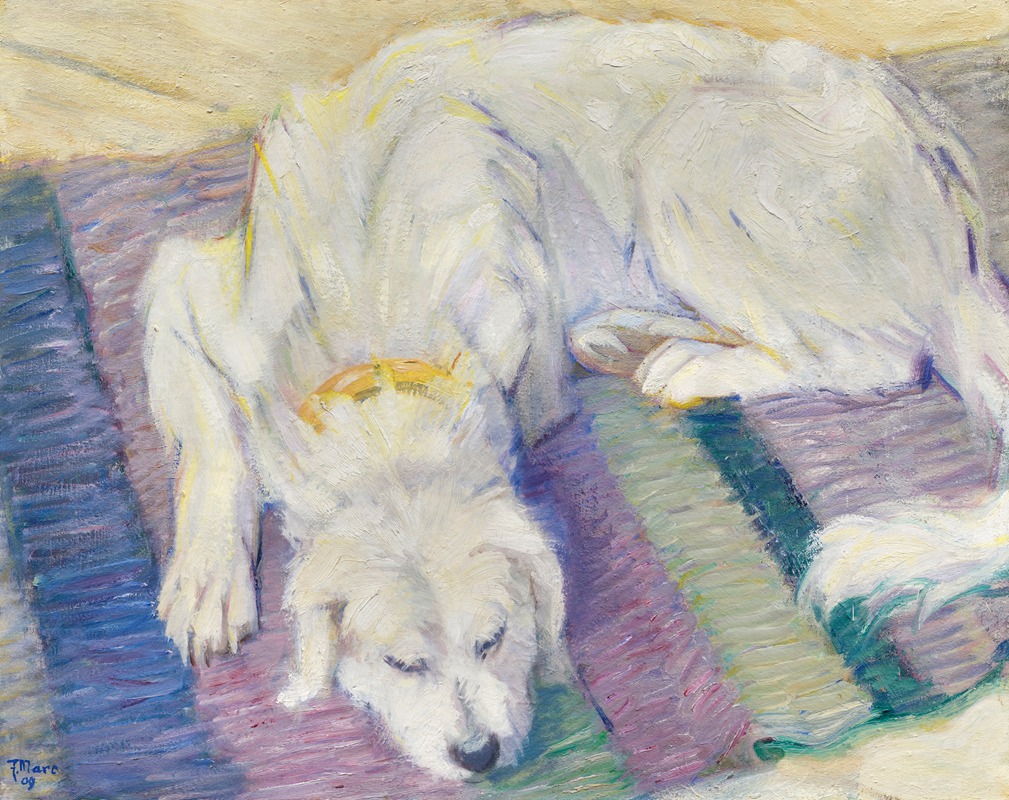
Liegender Hund
A hand-painted replica of Franz Marc’s masterpiece Liegender Hund, meticulously crafted by professional artists to capture the true essence of the original. Each piece is created with museum-quality canvas and rare mineral pigments, carefully painted by experienced artists with delicate brushstrokes and rich, layered colors to perfectly recreate the texture of the original artwork. Unlike machine-printed reproductions, this hand-painted version brings the painting to life, infused with the artist’s emotions and skill in every stroke. Whether for personal collection or home decoration, it instantly elevates the artistic atmosphere of any space.
Franz Marc was a prominent German painter and printmaker, and one of the key figures of the German Expressionist movement. He is best known for his vivid use of color and his depictions of animals, which he often used as symbols to express his ideas about the spiritual and emotional aspects of life. One of his lesser-known works is "Liegender Hund" (translated as "Reclining Dog"), which exemplifies his unique approach to art and his fascination with the natural world.
"Liegender Hund" was created during a period when Marc was deeply involved with the artistic group known as Der Blaue Reiter (The Blue Rider), which he co-founded with Wassily Kandinsky in 1911. This group was instrumental in the development of Expressionism in Germany, emphasizing the use of color and abstraction to convey emotional and spiritual truths. Marc's work during this time often featured animals, which he believed were more pure and closer to nature than humans.
The painting "Liegender Hund" showcases Marc's distinctive style, characterized by bold colors and simplified forms. In this work, Marc uses a limited color palette to create a harmonious composition, focusing on the essence of the animal rather than its realistic depiction. The reclining dog is rendered in a way that emphasizes its form and presence, capturing a sense of tranquility and connection with nature.
Marc's choice of animals as subjects was not merely aesthetic; it was deeply philosophical. He saw animals as symbols of an uncorrupted world, in contrast to the industrialization and materialism he observed in human society. Through his art, Marc sought to convey a sense of unity between humans and the natural world, using animals as a bridge to explore these themes.
Franz Marc's career was tragically cut short by his death in World War I in 1916. Despite his relatively brief career, his work had a lasting impact on the art world, influencing subsequent generations of artists. His paintings, including "Liegender Hund," continue to be celebrated for their emotional depth and innovative use of color and form.
Today, Marc's works are held in high regard and can be found in major art museums around the world. They are appreciated not only for their aesthetic qualities but also for the way they reflect the artist's deep engagement with the philosophical and spiritual questions of his time. "Liegender Hund," like many of Marc's other works, invites viewers to reflect on their own relationship with nature and the world around them, offering a glimpse into the artist's vision of a more harmonious existence.
In summary, "Liegender Hund" is a testament to Franz Marc's artistic vision and his commitment to exploring the spiritual connections between humans and animals. Through his use of color and form, Marc created a work that continues to resonate with audiences, inviting them to consider the deeper meanings behind his art.





